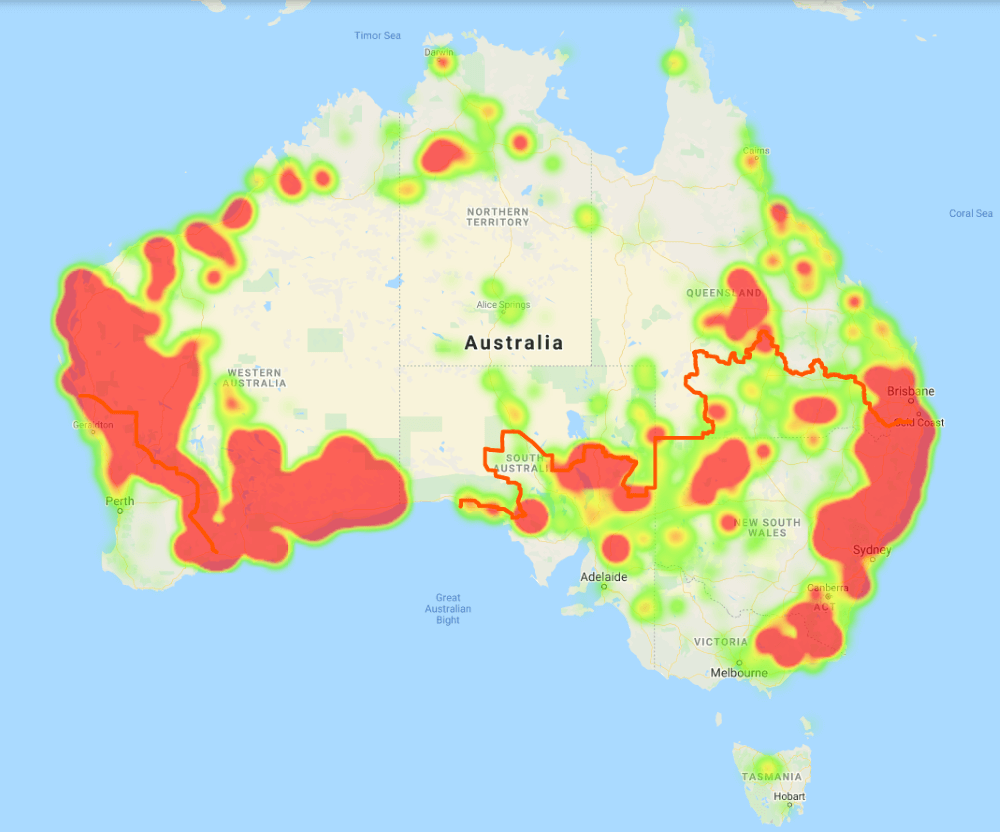WildDogScan opens a new window into wild dog activity at a national level
A recent update to WildDogScan now provides a national picture of wild dog activity across Australia – highlighting hotspots of wild dog activity and management.
Drawing on more than 134,000 records of wild dog sightings, attacks and control activities uploaded to the platform since its launch in 2011, WildDogScan allows users to view the data as a heat map.

Heat map of wild dog activity across Australia since 2011, incorporating 135,000 records.
Heat maps are graphical representations of data where values are depicted by colour, making it easier for people to view complex data and understand it at a glance.
The new WildDogScan heat map displays areas where wild dogs are causing damage, and the areas where communities and local authorities are managing them.
“This is the first time that data on wild dog activity has been visually represented at a national scale in this way,” said Mr Peter West, National WildDogScan Coordinator.
“It is a striking display that shows hot spots of activity across each State and Territory.
“In time we hope to build in increased functionality, such as the option for users to create time series maps and display the heat map at a State and Territory level.”
Currently the heat map displays at a national scale. When users zoom in to finer scales, the platform switches to a display public records.
“We are very conscious of farmer privacy and the security of the data they upload to the platform — this will inform how we display the data into the future,” said Mr West.
People and landholder groups using WildDogScan can access the latest tools, advice and information to inform their wild dog management planning and practices. Over 250 landholder groups have registered on the platform, allowing their members to monitor wild dog activity, stay informed of changes in wild dog activity, and connect with support organisations.
The platform now contains 28,000 individual observations of wild dogs, 17,000 reports of wild dog attacks on sheep, cattle, goats, and other domesticated animals such as horses, farm dogs and alpacas, as well as 107,000 control activities.
This information enables landholder groups to better plan and implement community driven wild dog management that delivers improved livestock production, as recently demonstrated by eight Victorian lamb and wool producers participating in the ‘Less Predators, More Lambs’ project funded by Meat and Livestock Australia.
For more information visit the WildDogScan website or send Peter West an email.




